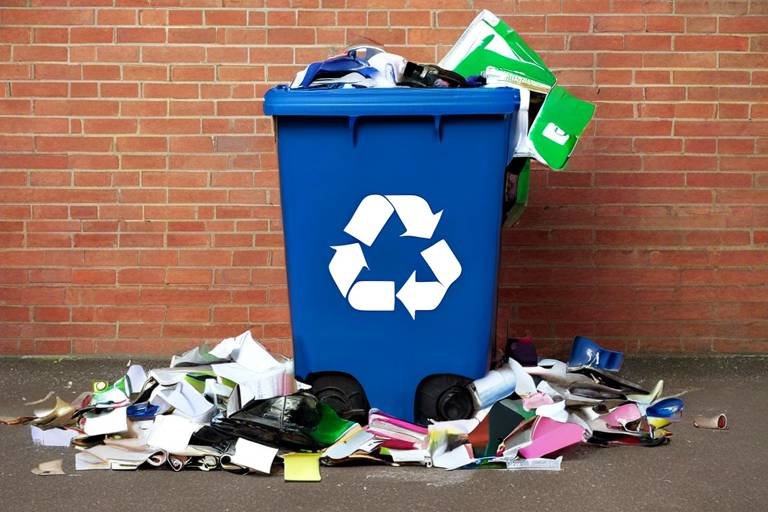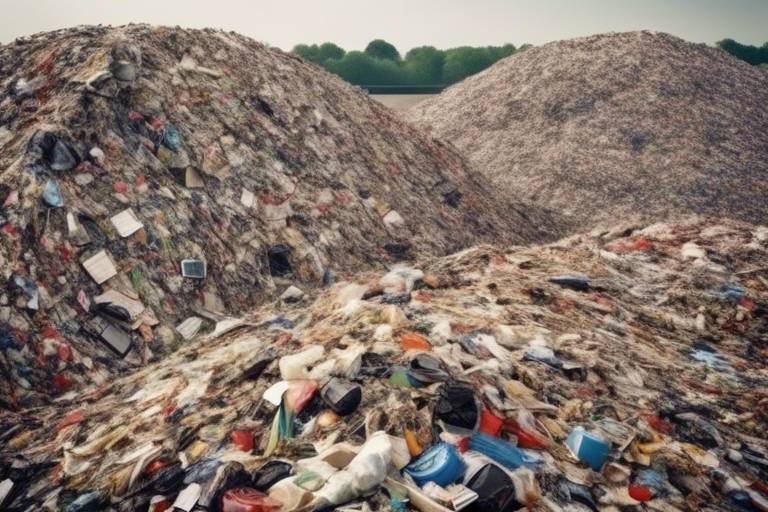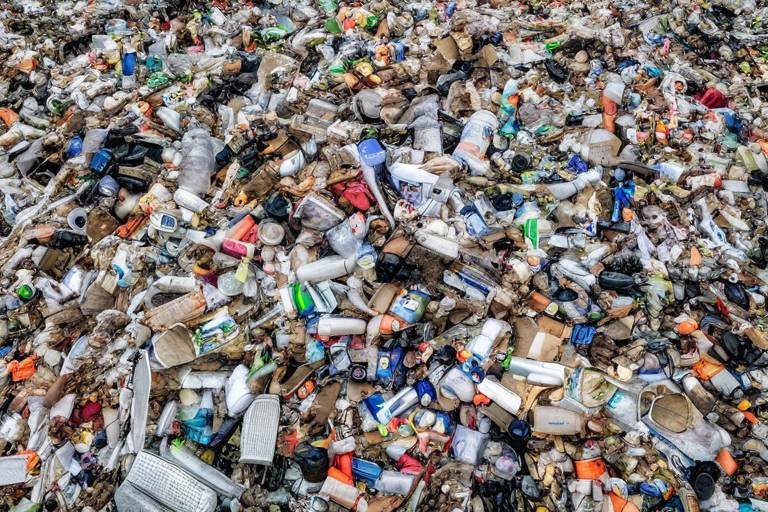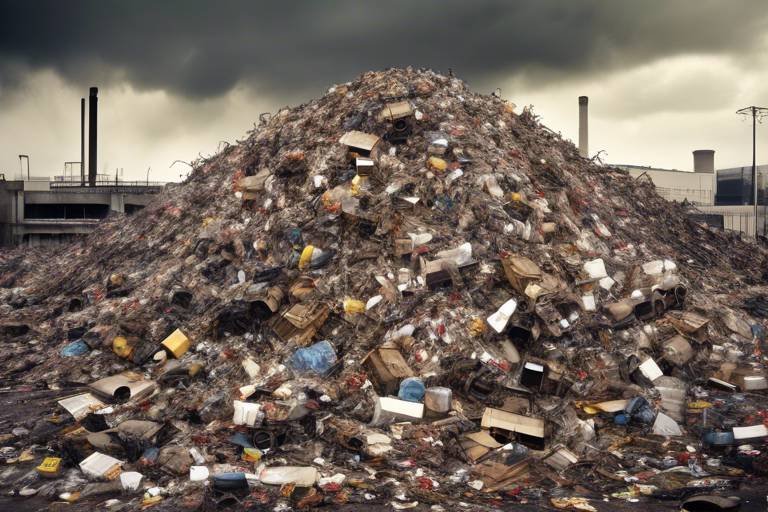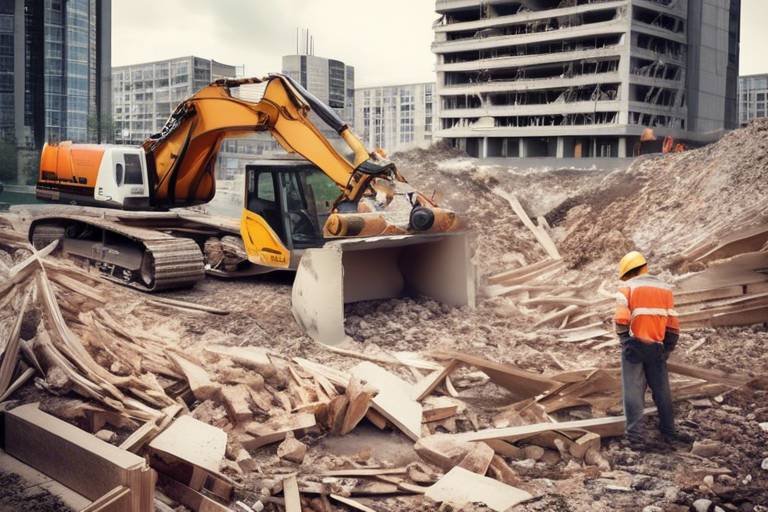Recycling in Schools - A Beginners Guide
In today's world, where environmental concerns are at an all-time high, the role of schools in promoting sustainability through recycling has never been more critical. Schools are not just places for academic learning; they are also vital environments for instilling values and behaviors that can lead to a more sustainable future. By integrating recycling initiatives into the school curriculum, educators can help students understand the significance of waste management and environmental stewardship. This article serves as a comprehensive guide for educators and students alike, exploring the importance of recycling in schools, how to set up effective recycling programs, and the benefits that come with these initiatives.
Understanding why recycling is crucial in educational settings can motivate students to participate actively. Recycling in schools not only helps reduce waste but also plays a significant role in fostering a culture of sustainability. Here are some of the key benefits:
- Environmental Benefits: Recycling reduces landfill waste, conserves natural resources, and lowers greenhouse gas emissions. Every item recycled is one less item that ends up in a landfill, contributing to a cleaner planet.
- Educational Benefits: Incorporating recycling into the curriculum provides students with hands-on learning experiences. They can learn about the lifecycle of materials, the impact of waste on the environment, and the importance of responsible consumption.
- Social Benefits: Recycling programs can foster teamwork and community spirit among students. When students work together on recycling initiatives, they develop a sense of responsibility and pride in their contributions to the school and the environment.
Establishing an effective recycling program requires careful planning and organization. It’s not just about placing bins around the school; it’s about creating a culture of recycling that resonates with students, staff, and the community. Here’s how you can get started:
- Assess the Needs of Your School: Understand your school's specific recycling needs by conducting a waste audit. This will help identify the types of materials generated and the best ways to recycle them.
- Set Clear Goals: Define what you want to achieve with your recycling program. Is it reducing waste by a certain percentage, or increasing participation levels among students?
- Engage Stakeholders: Involve teachers, students, and parents in the planning process. Their input can provide valuable insights and foster a sense of ownership over the program.
Recognizing which materials can be recycled is essential for any program. Common recyclable items found in schools include:
- Paper (notebooks, printer paper)
- Cardboard (boxes, packaging)
- Plastics (bottles, containers marked with recycling symbols)
- Metals (aluminum cans)
Educating students about proper disposal methods is key. Use visual aids and informative posters to help them understand what can and cannot be recycled.
Creating designated recycling stations in classrooms is a fantastic way to encourage participation. These stations should be clearly labeled and easily accessible. Consider using color-coded bins to distinguish between recyclables, compost, and trash. The clearer the system, the more likely students are to use it correctly.
Implementing school-wide recycling campaigns can enhance participation and awareness. Organize events such as “Recycling Week” where students can engage in activities like art projects made from recycled materials or competitions to see which class can recycle the most. Promote these initiatives through newsletters, social media, and school announcements to ensure everyone is informed and involved.
Engaging students in recycling efforts fosters a sense of responsibility. Encourage them to take on leadership roles, such as recycling coordinators, where they can help oversee the program and educate their peers. This involvement not only empowers students but also instills a lifelong commitment to environmental stewardship.
Despite the benefits, schools may face challenges in implementing recycling programs. Common obstacles include lack of participation and contamination of recycling bins. However, practical solutions can help overcome these challenges.
Contamination can undermine recycling efforts. Educate students about the importance of keeping recyclables clean and free from non-recyclable materials. Regularly remind them through announcements and visual reminders placed near recycling bins.
Sustaining interest in recycling initiatives can be challenging. To keep students engaged over time, consider implementing a rewards system, where classes earn points for their recycling efforts. Additionally, regularly share updates on the program’s progress, celebrating milestones and achievements to keep the momentum going.
Q: What materials can be recycled in schools?
A: Common recyclable materials include paper, cardboard, plastics, and metals. Check your local recycling guidelines for specific details.
Q: How can we involve parents in our recycling program?
A: Communicate with parents through newsletters and school meetings, encouraging them to support recycling at home and participate in school events.
Q: What should we do if students are not participating?
A: Increase awareness through fun campaigns, incentives, and by demonstrating the positive impact of recycling on the environment.

The Importance of Recycling in Schools
This article provides an overview of recycling initiatives in schools, highlighting their importance, methods, and benefits for students and the environment. It serves as a comprehensive guide for educators and students alike.
Understanding why recycling is crucial in educational settings can motivate students to participate actively. The significance of recycling in schools goes beyond just reducing waste; it creates a ripple effect that can influence the community and the environment. When students engage in recycling programs, they learn valuable lessons about responsibility and sustainability, which can shape their attitudes and behaviors for life.
One of the most compelling reasons for incorporating recycling in schools is its environmental impact. By recycling materials such as paper, plastic, and metals, schools can significantly reduce the amount of waste that ends up in landfills. This not only conserves natural resources but also minimizes pollution and greenhouse gas emissions, contributing to a healthier planet. For instance, did you know that recycling one ton of paper can save 17 trees and 7,000 gallons of water? That's a staggering amount for just one school!
Moreover, recycling initiatives in schools serve as a teaching tool. They provide an opportunity to integrate environmental education into the curriculum. Students can learn about the lifecycle of products, the importance of resource conservation, and the impact of waste on the environment. This hands-on experience is far more effective than traditional classroom teaching methods. Imagine students not just reading about recycling but actually participating in it! It's like turning theory into practice, making learning more engaging and meaningful.
Additionally, recycling fosters a sense of community and social responsibility. When students work together on recycling projects, they develop teamwork and leadership skills. They learn to communicate, collaborate, and take ownership of their actions. This sense of community can extend beyond school walls, encouraging families and friends to adopt similar practices at home. In essence, recycling in schools can ignite a movement that promotes environmental stewardship throughout the community.
To illustrate the benefits of recycling in schools, here’s a quick overview:
| Benefit | Description |
|---|---|
| Environmental Awareness | Students learn about the importance of conserving resources and reducing waste. |
| Practical Education | Recycling provides hands-on learning experiences that enhance understanding. |
| Community Engagement | Encourages students to involve their families and peers in sustainable practices. |
In summary, the importance of recycling in schools cannot be overstated. It not only benefits the environment but also enriches the educational experience and fosters a sense of community. By implementing recycling programs, schools can cultivate a generation of environmentally conscious individuals who are prepared to take on the challenges of the future.
Establishing an effective recycling program requires careful planning and organization. This section outlines the steps necessary to create a successful recycling initiative tailored to the needs of a school community.
Recognizing which materials can be recycled is essential for any program. This subsection details common recyclable items found in schools and provides tips for educating students about proper disposal methods.
Creating designated recycling stations in classrooms encourages students to participate. This section discusses how to set up these stations effectively and the importance of clear labeling.
Implementing school-wide recycling campaigns can enhance participation and awareness. This part covers strategies for promoting these initiatives and engaging the entire school community.
Engaging students in recycling efforts fosters a sense of responsibility. This section highlights ways to involve students in decision-making and leadership roles within recycling programs.
Despite the benefits, schools may face challenges in implementing recycling programs. This section identifies common obstacles and offers practical solutions to overcome them.
Contamination can undermine recycling efforts. This subsection explains how to educate students about keeping recyclables clean and free from non-recyclable materials.
Sustaining interest in recycling initiatives can be challenging. This section provides strategies for keeping students engaged and motivated over time, ensuring the program's success.
- Why should schools implement recycling programs? Schools can significantly reduce waste, teach students about sustainability, and engage the community.
- What materials are commonly recycled in schools? Common recyclables include paper, plastics, metals, and cardboard.
- How can students get involved in recycling initiatives? Students can participate in decision-making, lead campaigns, and help educate their peers.

Setting Up a Recycling Program
Establishing a successful recycling program in schools is not just about placing a few bins around the campus; it's about creating a culture of sustainability that resonates with both students and staff. This journey begins with a clear vision—understanding the goals of the program and how it aligns with the school's mission. To kick things off, it’s essential to gather a team of passionate individuals who can champion the cause. This could include teachers, students, and even parents. After all, teamwork makes the dream work!
Once the team is in place, the next step is to conduct a thorough assessment of the school's current waste management practices. This involves identifying what materials are most commonly discarded and evaluating the existing disposal methods. For instance, do you know how much paper gets thrown away each week? By gathering this data, you can pinpoint the areas where recycling will have the most significant impact. It’s like having a treasure map that leads you to the gold—only in this case, the treasure is a cleaner environment!
After assessing the current situation, the next phase is to develop a plan. This plan should outline the types of materials to be recycled, the locations of recycling bins, and a timeline for implementation. A good rule of thumb is to focus on materials that are easily recyclable and commonly found in schools, such as:
- Paper and cardboard
- Plastic bottles and containers
- Aluminum cans
- Glass bottles (if applicable)
With a plan in hand, it’s time to set up the recycling stations. Choose high-traffic areas where students and staff can easily access them. Visibility is key! Make sure to use clear, engaging signage that explains what can and cannot be recycled. Think of these signs as friendly guides, helping everyone navigate the recycling process. You wouldn’t want to wander in a new city without a map, right?
Another effective strategy is to host a launch event for the recycling program. This could be a fun assembly or a school-wide competition that gets everyone excited about participating. Consider incorporating games or challenges that educate students about recycling in a fun way. For example, you could have a "Recycle Relay" where students race to sort items correctly. Not only does this build enthusiasm, but it also instills a sense of ownership and pride in the initiative.
As the program gets underway, it’s crucial to monitor its progress regularly. Collect data on how much material is being recycled and share these results with the school community. Celebrating milestones—like reaching a certain amount of recycled materials—can motivate everyone to keep pushing forward. It’s like running a marathon; every mile you conquer deserves recognition!
Finally, don’t forget to incorporate feedback from students and staff. Their insights can help refine the program and make it even more effective. Remember, recycling is not a one-time event; it’s a continuous journey toward sustainability. By fostering an environment where everyone feels involved and informed, you can ensure that your recycling program thrives for years to come.
Q: What materials can we recycle in our school?
A: Common recyclable materials in schools include paper, cardboard, plastic bottles, aluminum cans, and glass bottles (if your local recycling program accepts them).
Q: How can we keep students engaged in the recycling program?
A: Regularly update students on the program's impact, hold competitions, and involve them in decision-making processes to maintain interest and enthusiasm.
Q: What should we do about contamination in recycling bins?
A: Educate students about proper recycling practices, and consider labeling bins clearly to reduce contamination. Regular reminders can help keep everyone informed.

Identifying Recyclable Materials
When it comes to recycling in schools, one of the first steps is understanding what materials can be recycled. This knowledge not only empowers students to make informed decisions but also ensures that the recycling program runs smoothly. In a typical school environment, there are a variety of materials that can be recycled, and recognizing these can make a significant difference in reducing waste.
Common recyclable items found in schools include:
- Paper: This includes everything from notebooks and worksheets to flyers and packaging. It's essential to educate students about the importance of recycling paper, as it can be transformed into new products, conserving trees and energy.
- Cardboard: Many schools receive deliveries in cardboard boxes. Instead of tossing them in the trash, these boxes can be recycled, reducing landfill waste.
- Plastic: Look for items marked with recycling symbols, particularly #1 (PETE) and #2 (HDPE). This includes water bottles, milk jugs, and some food containers.
- Metals: Aluminum cans, like those from soda or juice, are highly recyclable. Teaching students to recycle these materials can make a big impact.
In addition to these common materials, it's also vital to educate students about what cannot be recycled. Contaminants such as food waste, greasy pizza boxes, and non-recyclable plastics can spoil entire batches of recyclables. To help students remember, consider creating a simple visual guide that outlines both recyclable and non-recyclable items. This guide can be displayed in classrooms and recycling areas, serving as a constant reminder of how to dispose of materials correctly.
Moreover, engaging students in discussions about recycling can enhance their understanding. For instance, organizing classroom activities where students can sort items into recyclable and non-recyclable categories can be both educational and fun. Such hands-on experiences not only solidify their knowledge but also foster a sense of responsibility towards the environment.
Lastly, it’s essential to keep the conversation going. Regularly updating students on what materials are recyclable, especially as new products come onto the market, can help maintain their interest and participation in the recycling program. By making recycling a part of the school culture, we can instill lifelong habits in students that benefit both them and the planet.
Q: What types of paper can be recycled?
A: Most types of paper can be recycled, including office paper, newspapers, and cardboard. However, items like paper towels and greasy pizza boxes should not be recycled.
Q: Can we recycle plastic bags?
A: Generally, plastic bags cannot be recycled in curbside bins. However, many grocery stores have designated bins for recycling plastic bags.
Q: How can we educate students about recycling?
A: Engaging students through interactive activities, visual guides, and regular discussions can effectively educate them about recycling practices.

Classroom Recycling Stations
Creating designated recycling stations in classrooms is a fantastic way to encourage students to actively participate in recycling efforts. Think of these stations as the heart of your classroom's sustainability initiative. When students see a dedicated space for recycling, it sends a strong message that the school is committed to environmental responsibility. But how do you set these up effectively? Let's dive in!
First and foremost, it's crucial to ensure that these recycling stations are clearly labeled. Use bold, colorful signs that indicate what can and cannot be recycled. This visual cue not only attracts attention but also helps in educating students about proper disposal methods. For example, you might have separate bins for paper, plastics, and metals, each clearly marked with images and text. Consider using a simple table to illustrate the types of materials accepted:
| Material Type | Examples | Recyclable? |
|---|---|---|
| Paper | Notebooks, printer paper, newspapers | Yes |
| Plastic | Bottles, containers, wrappers | Yes |
| Metals | Cans, aluminum foil | Yes |
| Non-Recyclables | Food waste, plastic bags | No |
Next, consider the location of these recycling stations. Place them in high-traffic areas, such as near the classroom entrance or next to the waste disposal bins. This strategic placement ensures that students can easily access them, making it more likely they'll use them. You can even create a fun challenge by encouraging students to recycle as much as possible during a specific time frame, turning it into a friendly competition.
Another key aspect is to involve students in the process of maintaining these stations. Assign a recycling monitor each week, allowing students to take ownership of the recycling initiative. This not only fosters responsibility but also encourages teamwork as they work together to keep the stations clean and organized. You might be surprised at how invested students become when they feel like they have a stake in the project!
Finally, don’t forget about the power of education. Regularly discuss the importance of recycling in class and share interesting facts. Did you know that recycling one ton of paper can save 17 trees? Sharing such information can inspire students to think critically about their waste and its impact on the environment. Incorporating fun activities like art projects made from recycled materials can also enhance their understanding and appreciation of recycling.
In conclusion, classroom recycling stations are more than just bins—they are a vital part of fostering a culture of sustainability in schools. By making them accessible, engaging, and educational, you can inspire students to take an active role in protecting our planet. Now, let’s keep the momentum going and explore some frequently asked questions about setting up these recycling stations!

School-Wide Campaigns
Implementing school-wide recycling campaigns is a fantastic way to boost participation and raise awareness about the importance of recycling. These campaigns can transform the recycling culture within a school, making it not just a task, but a shared responsibility among students, teachers, and staff. Think of it as a community effort where everyone plays a part in creating a cleaner, greener environment. But how do we kick off such an initiative? Let's dive into some engaging strategies!
First and foremost, communication is key. Schools can utilize various channels to spread the word about the campaign. Announcements during morning assemblies, vibrant posters in hallways, and engaging social media posts can all help to create buzz. It's essential to keep the message clear and exciting—after all, we want to ignite enthusiasm! For instance, consider hosting a “Recycling Week” where each day has a specific theme. One day could focus on plastic waste, another on paper recycling, and so on. This not only keeps the campaign fresh but also educates students on different types of recyclables.
To further engage students, schools can organize friendly competitions. Imagine a contest where classrooms compete to see who can collect the most recyclables in a month. This adds an element of fun and encourages teamwork among students. Prizes could range from a pizza party to extra recess time, making the effort feel rewarding. Additionally, schools can create a “Recycling Champions” program where students take on leadership roles, guiding their peers in recycling efforts and educating them about the importance of sustainability.
Another effective strategy is to involve parents and the local community. Hosting workshops or informational sessions can help parents understand the recycling process and encourage them to support their children’s efforts at home. Schools can also partner with local recycling organizations to provide resources and expertise, making the campaign even more impactful. This collaboration can lead to community clean-up events, where students and families come together to clean up local parks or neighborhoods, reinforcing the message that recycling goes hand in hand with environmental stewardship.
Lastly, it’s crucial to celebrate successes. Recognizing the hard work of students and staff can motivate everyone to continue their efforts. Consider creating a “Recycling Hall of Fame” where classrooms or individuals who excel in recycling are highlighted. This not only provides recognition but also inspires others to strive for excellence in their recycling practices.
In summary, school-wide campaigns are an excellent way to foster a culture of recycling. Through effective communication, engaging competitions, community involvement, and recognition, schools can significantly enhance participation in recycling initiatives. Remember, the goal is to make recycling a fun and integral part of school life, ensuring that students carry these valuable lessons into their futures.
- How can we make recycling fun for students? Incorporate games, competitions, and themed weeks to make recycling engaging.
- What materials should we focus on recycling? Common materials include paper, plastics, metals, and cardboard. Educate students on what can and cannot be recycled.
- How can we involve parents in recycling initiatives? Host workshops and provide resources that parents can use at home to support their children’s recycling efforts.
- What should we do if contamination is an issue? Educate students on the importance of clean recyclables and provide clear labeling at recycling stations.

Involving Students in the Process
Involving students in the recycling process is not just about assigning them tasks; it’s about creating a culture of responsibility and ownership. When students feel like they are a part of something bigger, they are more likely to engage and invest their time and energy into the initiative. So, how can schools effectively get students involved in recycling programs? Let’s dive into some creative strategies!
One effective method is to establish student-led committees. These committees can be responsible for organizing recycling events, educating their peers, and even conducting audits to assess the school’s recycling efforts. This hands-on approach not only empowers students but also helps them develop leadership skills that will benefit them in the long run. Imagine a group of enthusiastic students brainstorming ideas for a recycling campaign—it's a fantastic way to foster teamwork and creativity!
Another exciting way to engage students is through friendly competitions. Schools can organize contests between classes or grades to see who can recycle the most materials over a month. This not only sparks excitement but also encourages students to think about their consumption habits. To make it even more appealing, schools could offer prizes, such as a pizza party or extra recess time, to the winning class. Who wouldn’t want to be part of a team that gets rewarded for doing something good for the planet?
Additionally, integrating recycling education into the curriculum can be a game-changer. Teachers can incorporate lessons about the environment, sustainability, and the impact of waste into subjects like science and social studies. For instance, students could conduct projects on the lifecycle of products or the effects of plastic pollution. By linking recycling to their academic work, students can see the real-world implications of their actions, making the concept of recycling more relatable and urgent.
To further enhance involvement, schools can create awareness campaigns that utilize social media platforms. Students can design posters, create videos, or even start a blog dedicated to recycling efforts in their school. This not only spreads the word but also gives students a platform to express their creativity and share their passion for recycling with the wider community. Imagine students posting about their recycling journey and inspiring others to join in—it's a ripple effect waiting to happen!
Lastly, it’s essential to recognize and celebrate student contributions. Schools can host events where students present their recycling projects or share their experiences. Recognizing their efforts not only boosts morale but also reinforces the importance of their role in the recycling initiative. After all, when students feel appreciated, they are more likely to continue their efforts and inspire their peers to do the same.
In conclusion, involving students in the recycling process is about more than just collecting bottles and paper; it’s about instilling a sense of responsibility and community. By creating opportunities for leadership, fostering friendly competition, integrating education, leveraging social media, and celebrating achievements, schools can cultivate a vibrant recycling culture that benefits both students and the environment.
- How can we start a recycling program in our school? Begin by assessing the current waste management practices, gather support from staff and students, and create a plan that includes clear goals and strategies.
- What materials can we recycle? Common recyclable materials include paper, cardboard, plastic bottles, aluminum cans, and glass. It’s important to check with local recycling guidelines.
- How can we keep students engaged over time? Regularly update the program, introduce new challenges, and celebrate milestones to maintain enthusiasm and participation.

Challenges and Solutions
Implementing recycling programs in schools can sometimes feel like trying to climb a mountain—daunting and full of obstacles. However, understanding these challenges and finding effective solutions is crucial for fostering a sustainable environment. One of the most significant hurdles schools face is contamination. When non-recyclable materials end up in recycling bins, it can spoil entire batches of recyclables, leading to increased waste and frustration. Educating students about what can and cannot be recycled is essential. Schools can host fun and interactive sessions where students learn through games and activities. For instance, a sorting game can help them identify recyclable items versus trash.
Another challenge is maintaining long-term engagement. Initially, students might be excited about recycling, but that enthusiasm can wane over time. To combat this, schools should implement ongoing educational programs that remind students of the importance of their efforts. Regularly scheduled events, such as Recycling Weeks, can reignite interest. Schools can also create a recycling club where students take on leadership roles, fostering a sense of ownership and responsibility. By allowing students to lead initiatives, they feel more connected to the cause.
Furthermore, a lack of resources can hinder recycling efforts. Some schools may not have the budget for proper bins or educational materials. However, there are creative solutions! Schools can partner with local businesses or community organizations to secure funding or support. For example, a local waste management company might provide bins in exchange for a partnership that promotes their services. This not only alleviates financial pressure but also builds community relationships.
To summarize the challenges and solutions faced when implementing recycling programs in schools, the following table outlines key issues along with potential strategies:
| Challenge | Solution |
|---|---|
| Contamination of recyclables | Educational games and activities to teach proper sorting |
| Declining student engagement | Ongoing educational programs and recycling clubs |
| Lack of resources | Partnerships with local businesses for support |
By addressing these challenges head-on and employing creative solutions, schools can create a thriving recycling culture that benefits both students and the environment. Remember, every small effort counts, and with a little determination and teamwork, schools can make a significant impact!
- What materials can typically be recycled in schools? Most schools can recycle paper, cardboard, plastic bottles, and aluminum cans. However, it's always best to check local guidelines.
- How can students get involved in recycling initiatives? Students can participate by joining recycling clubs, helping to educate their peers, and leading school-wide campaigns.
- What should I do if my school struggles with contamination? Implement educational workshops and interactive activities to teach students about proper recycling practices.
- How can we maintain long-term interest in recycling? Regular events, competitions, and leadership opportunities can keep students engaged and motivated.

Addressing Contamination Issues
Contamination is one of the biggest hurdles in the recycling process, especially within school environments where students are still learning the ropes of proper waste management. Imagine a scenario where students are excitedly tossing their recyclable materials into the bin, only to unknowingly mix in non-recyclable items like greasy pizza boxes or plastic wrappers. This simple mistake can lead to an entire batch of recyclables being deemed unusable, which is not only frustrating but also counterproductive to the goals of the recycling program.
To tackle contamination effectively, it's crucial to educate students about what can and cannot be recycled. This education can take various forms, such as interactive classroom sessions, engaging posters, or even fun quizzes that emphasize the importance of clean recycling. For instance, you could set up a game where students sort through a pile of materials to identify recyclables versus non-recyclables. Such hands-on activities make the learning process enjoyable and memorable.
Furthermore, clear labeling on recycling bins is essential. Each bin should have visible signs that detail what can be recycled. Consider using images alongside text, as visuals can help younger students understand better. For example, a bin for paper recycling might have pictures of acceptable items like notebooks and newspapers, while also showing a big red cross over items like food containers or plastic bags. This visual cue can significantly reduce the chances of contamination.
Another effective strategy is to involve students in monitoring the recycling stations. By assigning roles or responsibilities, such as “recycling monitors,” students can take ownership of the program. They can help remind their peers about proper disposal methods and even conduct periodic checks to ensure that the recycling bins are being used correctly. This not only encourages accountability but also fosters a sense of community and teamwork.
Lastly, it’s important to address contamination issues continuously. Regularly reviewing the recycling process and discussing any contamination problems during school meetings or classroom discussions can keep everyone informed and engaged. Sharing success stories, like the amount of recyclable material collected over a month, can motivate students to maintain high standards. After all, when students see the positive impact of their efforts, they’re more likely to remain committed to the program.
- What types of materials are commonly contaminated in recycling bins? Common contaminants include food waste, plastic bags, and greasy cardboard.
- How can we effectively educate students about recycling? Interactive games, visual aids, and hands-on activities can make learning about recycling fun and engaging.
- What role can students play in maintaining recycling stations? Students can serve as recycling monitors, helping to ensure that bins are used correctly and reminding peers about proper disposal methods.
- How often should we review our recycling program? Regular reviews, perhaps monthly or quarterly, can help identify issues and celebrate successes, keeping everyone motivated.

Maintaining Long-Term Engagement
Maintaining long-term engagement in recycling programs can often feel like trying to keep a balloon inflated in a room full of sharp objects. It's a challenge, but with the right strategies, schools can create an environment where recycling becomes second nature for students. The key lies in fostering a culture of sustainability that resonates with students on a personal level. One effective way to do this is by incorporating interactive activities that make recycling fun and educational.
For instance, schools can organize recycling competitions among classrooms or grades. These competitions not only spark friendly rivalry but also encourage students to take ownership of their recycling habits. Recognizing and rewarding the efforts of students can greatly enhance their commitment. Consider creating a recycling leaderboard that showcases which class has recycled the most materials each month. The thrill of competition can keep students engaged and motivated to participate actively.
Another strategy to maintain interest is to integrate recycling into the broader curriculum. By linking recycling to subjects like science, art, and even math, educators can show students the practical implications of their efforts. For example, in science classes, students could study the lifecycle of materials and understand the impact of waste on the environment. In art classes, projects could focus on creating art from recycled materials. This not only makes recycling relevant but also highlights its importance in various aspects of life.
Furthermore, involving students in the decision-making process can significantly boost their commitment to recycling initiatives. When students feel that their voices are heard, they are more likely to be invested in the outcomes. Schools can establish a student recycling committee where students can propose ideas, plan events, and lead campaigns. This not only empowers them but also builds leadership skills that are invaluable in their personal development.
To ensure that engagement doesn't wane over time, schools should regularly assess and refresh their recycling programs. This could involve gathering feedback from students about what works and what doesn’t. By adapting programs based on student input, schools can keep the initiatives relevant and exciting. It’s essential to remember that the goal is not just to recycle but to create a sustainable mindset among students that will last a lifetime.
Finally, maintaining communication about the impact of recycling efforts is crucial. Sharing success stories, such as the amount of waste diverted from landfills or the positive environmental changes observed, can inspire students to continue their efforts. Consider using school newsletters, social media, or bulletin boards to highlight these achievements. When students see the tangible results of their actions, it reinforces the importance of their participation and encourages ongoing engagement.
- How can I get my school started with a recycling program? Start by assessing what materials can be recycled in your school and gather support from teachers and students. Create a plan and set up recycling stations.
- What types of materials are commonly recycled in schools? Common recyclable materials include paper, cardboard, plastics, and aluminum. It's essential to educate students on proper sorting.
- How can we measure the success of our recycling program? Track the amount of recyclable materials collected and compare it over time. Engaging students in this process can also keep them motivated.
- What are some fun activities to promote recycling? Organize competitions, art projects using recycled materials, or field trips to recycling facilities to educate and inspire students.
Frequently Asked Questions
- Why is recycling important in schools?
Recycling in schools plays a crucial role in promoting environmental awareness among students. It not only helps reduce waste but also teaches students the importance of sustainability. By participating in recycling programs, students learn valuable lessons about responsibility and the impact of their actions on the planet.
- What materials can be recycled in schools?
Common recyclable materials found in schools include paper, cardboard, plastic bottles, aluminum cans, and glass. It's essential to educate students about these items to ensure they understand what can and cannot be recycled. This knowledge helps minimize contamination in recycling bins.
- How can we set up recycling stations in classrooms?
Setting up recycling stations is easy! Start by selecting a designated spot in each classroom, then provide clearly labeled bins for different materials. Make sure to include visual aids that illustrate what can be recycled. This will encourage students to participate and make recycling a part of their daily routine.
- What are some effective strategies for school-wide recycling campaigns?
To promote school-wide recycling campaigns, consider organizing events like recycling contests or themed days. Collaborate with student organizations to spread the word, and use posters and announcements to keep the momentum going. Engaging the entire school community fosters a sense of unity and shared responsibility.
- How can we involve students in the recycling process?
Involving students in the recycling process can be as simple as creating recycling committees or appointing 'recycling ambassadors' in each class. This gives students a sense of ownership and encourages them to take initiative. By actively participating in decision-making, students can contribute their ideas and feel more connected to the program.
- What challenges might we face when implementing a recycling program?
Common challenges include contamination of recyclables, lack of student interest, and insufficient resources. However, these obstacles can be addressed by providing education on proper recycling practices, keeping the program engaging with fun activities, and seeking support from the school administration and community.
- How can we maintain long-term engagement in recycling initiatives?
To keep students engaged over time, regularly refresh the program with new activities, challenges, or themes. Celebrate successes, share progress reports, and involve students in planning future events. Creating a culture of sustainability will help ensure that recycling remains a priority within the school community.
- What should we do about contamination issues?
Educating students about contamination is key. Provide clear instructions on how to keep recyclables clean and separate from non-recyclable materials. Regular reminders and visual aids can help reinforce these practices, reducing contamination and improving the overall effectiveness of the recycling program.

